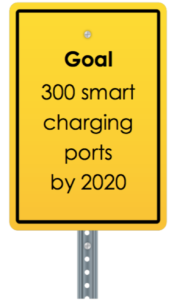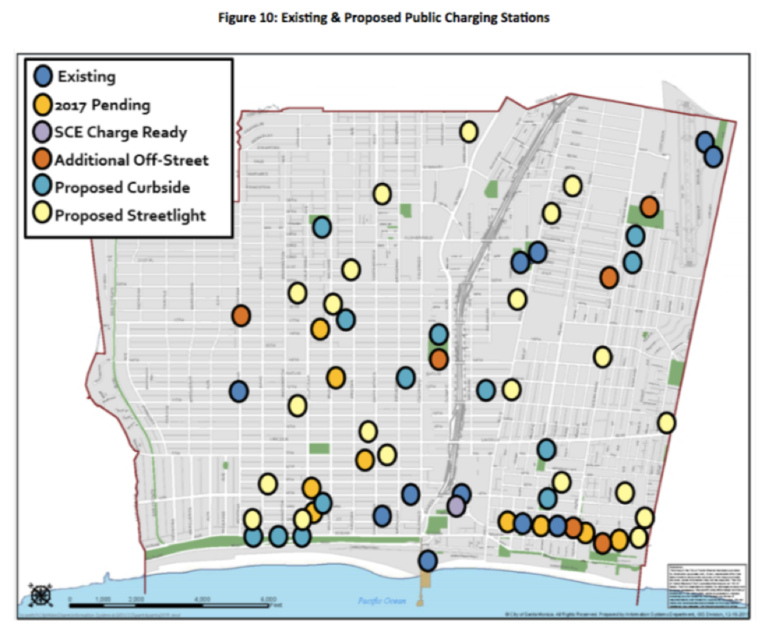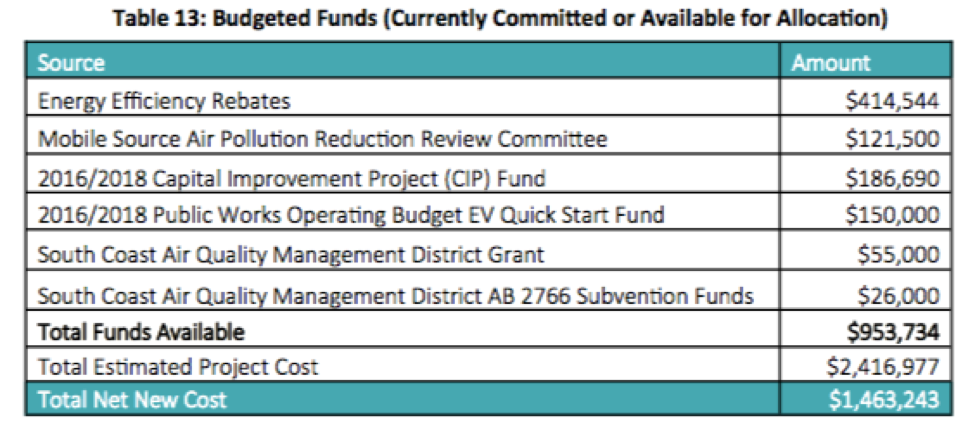City of Santa Monica
Cars are part of the American lifestyle and culture. Factoring in automobile manufactures, public road infrastructure, and the history of transportation in our country is vital to understand the impact of fossil-fuel burning vehicles on the environment. For an industry that accounts for a total of over 60% of greenhouse gas emissions across the globe, we have to consider solutions on a comparable scale to tackle the issue appropriately.
How can residents be expected to change their modes of transportation if eco-friendly choices are not available where they live? To some, giving up a car can feel like giving up individual freedom of mobility – but it shouldn’t and doesn’t have to feel that way in order to transition to a greener society. Looking into the future, transportation and its impacts must be considered if California is going to be Carbon Neutral by 2045. The following LGSEC Member Spotlight highlights the City of Santa Monica’s solution for reducing the environmental consequences of the transportation sector without affecting the individual’s freedom of mobility.

Goal:
The City of Santa Monica has created the Electric Vehicle Action Plan (EVAP) with the goal to reduce greenhouse gas emissions coming from vehicles, which currently contributes to 64% of carbon emissions in the area. The City hopes to meet these goals by expanding the Electric Vehicle (EV) charging network to meet future charging needs to encourage the switch to EVs. Currently at 89 chargers, the City plans to expand to 300 chargers by 2020 and 1,000 chargers by 2025. Making chargers more accessible will hopefully increase the amount of EVs on the road from 2% to 15% by 2025. This 13% increase is estimated to replace about 9,000 fossil-fuel powered vehicles and save 26,000 metric tons of carbon dioxide from being emitted.

EV Plan Recommendations:
The EVAP highlights four priorities with various recommended actions belonging to each. Implementation times are stated for each action and are either near-term (0-6 months), mid-term (6-18 months), or long-term (18 months-3 years).
I. Public Infrastructure (page 39)- Modernize and expand public EV infrastructure to improve user experience and sustain operations
- Add new smart chargers to the network; retrofit or replace legacy chargers with “smart” chargers. Timeframe: Near-to-mid-term
- Develop a fee structure that recovers operations and maintenance costs, encourages user turnover, and supports community EV programs. Timeframe: Near-term
- Earn credit revenue by participating in the state Low Carbon Fuel Standard Program. Timeframe: Mid-term
- Add charging stations for City fleet facilities. Timeframe: Mid-term
- Explore innovative EV charging technologies to integrate into Santa Monica’s EV charging network. Timeframe: Mid-to-long-term
- Explore DC fast charging options where appropriate and feasible. Timeframe: Mid-term
- Develop guidelines and standards to support charging for a range of e-mobility options. Timeframe: Mid-term
II. Private Charging (page 54)- Increase EV charging for Multi-Unit Dwellings (MUDs) and workplaces
- Develop a pilot rebate program for MUD residents and workplaces; include additional funding for low-income residents. Timeframe: Near-term
- Identify qualified vendors to handle MUD and workplace charging in Santa Monica. Timeframe: Mid-term
- Streamline the permitting process and allow online permits for small-scale installations. Timeframe: Near-term
- Designate off-street and on-street locations for public charging infrastructure. Timeframe: Mid-term
- Implement a pilot program for provide EV charging through streetlights. Timeframe: Mid-to-long-term
- Partner with priority destination sites and leverage public-private-partnerships to install EV charging. Timeframe: Mid-to-long term
III. Public Policy (page 66)- Update EV parking policies and practices for efficient charging station use
- Modify City Ordinance to allow on-street EV charging. Timeframe: Mid-term
- Update zoning ordinance requirements to increase the parking spaces available for EV charging. Timeframe: Mid-term
- Review and update parking policies and signage for public EV charging locations. Timeframe: Mid-term
- Explore a program to adjust nighttime parking rates or provide resident charging permits for overnight charging at public facilities. Timeframe: Near-term
- Expand use of EV’s in carshare and rideshare services. Timeframe: Mid-term
- Expand the fleet-sharing system for all city departments and divisions located at the Civic Center. Timeframe: Mid-term
IV. Community Outreach (page 78)- Develop EV outreach programs and resources for residents and businesses
- Create a webpage with available EV resources, programs, and technologies. Timeframe: Near-to-mid-term
- Develop an outreach program for EV charging stations similar to the Solar Santa Monica Program called EV Santa Monica. Timeframe: Mid-term
- Develop outreach targeted to low-income residents. Timeframe: Mid-to-long-term
- Encourage access to EV carsharing for MUD residents and a program for low-income individuals. Timeframe: Mid-to-long-term
- Designate an EV Program Coordinator to manage all responsibilities related to EVSE coordination and implementation. Timeframe: Mid-to-long-term
- Establish an EV Working Group to provide direction and oversight of the implementation of the EV Action Plan. Timeframe: Near-to-mid-term
- Coordinate with regional partners to leverage procurement and funding opportunities. Timeframe: Near-to-mid-term
Funding
Table 13 below lists the funds currently granted to the project. Although sufficient funds haven’t been met, there are various sources to pull funding from in the future. Administrators include California Air Resources Board (CARB), South Coast Air Quality Management District, Southern California Edison, City and State Government, California Energy Commission, Environmental Protection Agency, and Volkswagen (settlement funds). These administrators have funding available under different projects pertaining to clean vehicles, EV charging, renewable fuel, and similar initiatives that the EVAP will likely qualify for.

Program Partners:
The City of Santa Monica partnered with the following organizations to complete the EVAP: AeroVironment, Austin Energy, City of Los Angeles, ChargePoint, EV Charging Solutions, EverCharge, NRG EVgo, Drive Clean Santa Monica, Climate Action Santa Monica, Southern California Association of Governments, UCLA Luskin Center for Innovation, Westside Cities Council of Governments.
